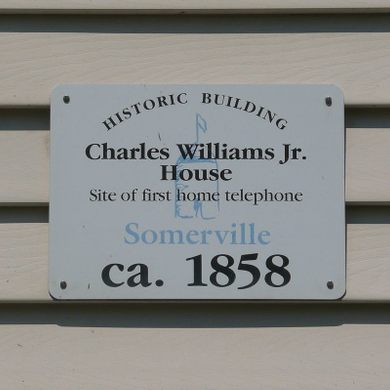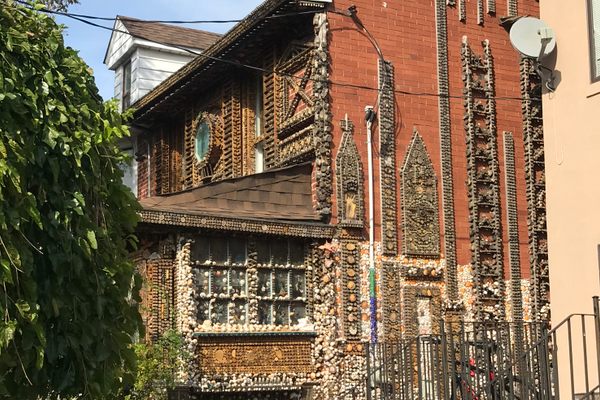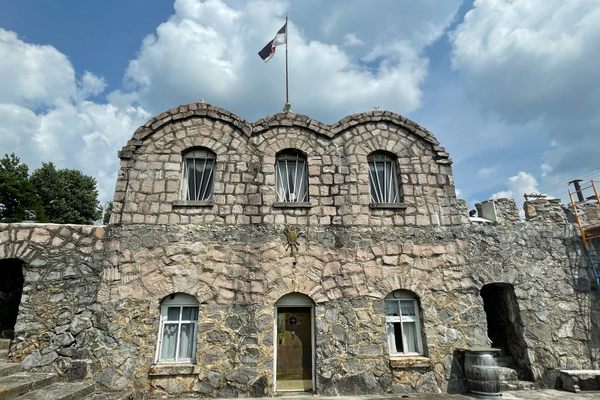Charles William Jr. House
This Massachusetts home was the first to have a telephone line and its own phone number: 1.
Quick, what’s your telephone number? Many people have trouble remembering telephone numbers, but what if your phone number were 1?
The Charles Williams, Jr. House located on Arlington Street, Somerville, is the location of the first residential telephone line. The phone inside the house connected to Mr. Williams’ office at 109 Court Street in Boston, about 3 miles away. These two properties had the first telephone numbers – 1 & 2.
Charles Williams, Jr. was a businessman and manufacturer of electrical, telegraph, and telephone supplies. Born in Claremont, New Hampshire in 1831, he moved to Somerville with his family in 1846. Williams bought the house with his wife in the East Somerville neighborhood at 1 Arlington in 1876 and lived there until his death in 1908.
Soon after arriving in Somerville, Williams began to work in telegraph manufacturing, eventually opening his own factory and office in Boston. Moving to 109 Court Street in 1862, his company supplied equipment for the large telegraph companies and was also the place of research and inventions. Local author and journalist, Lynda Morgenroth, wrote in her book Boston Firsts that Williams’ office, known as a “garage band for inventors,” was the place in which patents for several inventions evolved including telegraph parts, burglar alarms, electric doorbells, and an electric voting machine. Thomas Edison also rented space from Williams.
Most notably, 109 Court Street is where Alexander Graham Bell invented the telephone in 1875 and just one year later, uttered the lines to his assistant Thomas A. Watson, “Mr. Watson, come here, I want to see you.”
Williams was eager to try out this new invention and started to construct the line from his office to his home in Somerville. Finally, in 1877 with his wife at home, the first call was made. Alexander Graham Bell wrote in a letter to his wife, “The articulation was simply perfect … The first telephone line has now been erected and the telephone is in practical use!”
Williams was given telephone numbers 1 & 2 and newspapers spread the word. Orders started to pour in. The first regular commercial customer was Roswell C. Downer, who installed a line between his house at 170 Central Street and his banking firm on State Street in Boston. After this, the Williams’ shop became the first and only manufactory of telephone instruments.
Williams retired from the company in 1886. Historian J. Casale wrote, “Williams had a very quiet disposition, he was fond of books and reading and spent several years in retirement traveling the world and the US with his family until 10 years prior to his death.”
1 Arlington sits on the corner of an unusually large lot, closest to the intersection of Arlington and Lincoln Streets. Most of the homes in the neighborhood were built for businessmen and workers who commuted to Boston and Cambridge, only 2-3 miles away.
According to its Historic Form B Register, by Preservation Planner Betsy Friedberg, 1 Arlington is a prominent Italianate home and was built in in several stages starting around 1858. In 1888, Williams undertook a renovation to the interior and exterior of the home in the Eastlake design. The style came from Charles Eastlake, whose late 19th century design included architecture and furniture elements that featured geometric shapes and intricate carvings.
One of the most striking features of the home is the set of balconies protruding from the first floor window bays on either side of the front porch. Supported by grand console brackets, the balcony has enclosed balustrades and is covered by window canopies also with detailed brackets and iron railings.
The front porch facing Arlington Street is flanked with two sets of columns, one round and one square, and lead to the large double doors with ¾ high glass inserts above ornamental panels. Pediments are located above the front porch and center windows on the second story.
Interior details include elaborate, plaster ceiling medallions, thick crown molding, detailed window and door trim, and elegant fireplace mantles and surrounds. Architectural details include door and window hardware one of which is a set of lion head doorknobs. Wood floors can be found throughout the house, including parquet and inlay.
Although 20th Century changes to the house include aluminum siding, asphalt roof shingles (partial), and interior modifications, the integrity of the structure and historic architectural details still remain.
Due to its significance related to the historic events connected to the telephone and to its architectural detail, the house was added to the Somerville Register of Historic Places as a single building district in 1985 and the Massachusetts and National Register of Historic Places in 1989. It has remained a private residence since it was built and was recently put up for sale in 2014.




















Follow us on Twitter to get the latest on the world's hidden wonders.
Like us on Facebook to get the latest on the world's hidden wonders.
Follow us on Twitter Like us on Facebook